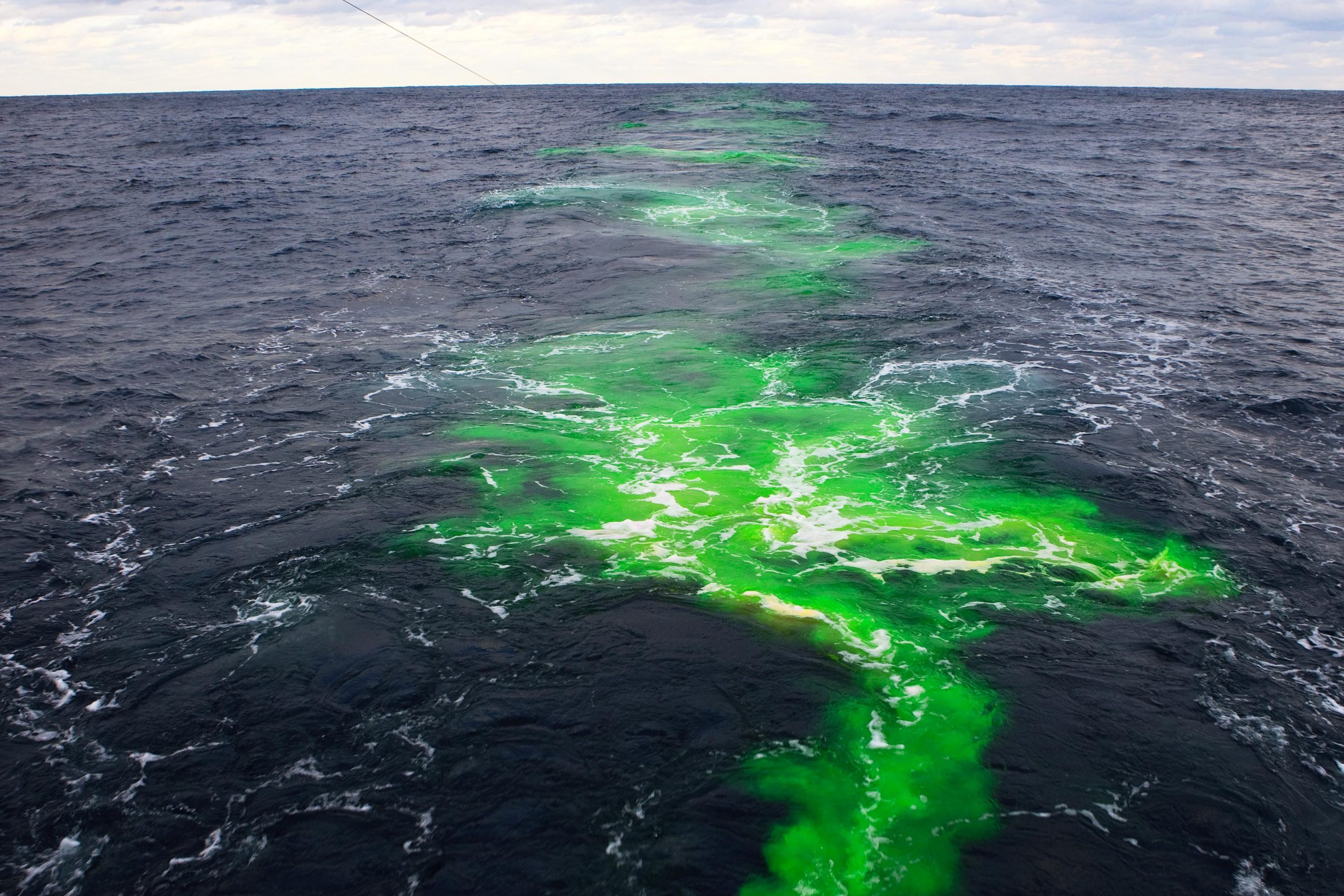
New research provides the first direct evidence for the Gulf Stream blender effect, identifying a new mechanism of mixing water across the swift-moving current.
The Gulf Stream is one of the largest drivers of climate and biological productivity from Florida to Newfoundland and along the western coast of Europe.
Scientists then tracked the drift of both dye and float through the Gulf Stream revealing significant mixing of waters across the swift current.
The multi-institutional study led by a University of Maryland researcher revealed that churning along the edges of the Gulf Stream across areas as small as a kilometer could be a leading source of ocean mixing between the waters on either side of the current.
“This long-standing debate about whether the Gulf Stream acts as a blender or a barrier to ocean mixing has mainly considered big ocean eddies, tens of kilometers to a hundred kilometers across,” said Jacob Wenegrat, an assistant professor in UMD’s Department of Atmospheric and Oceanic Science and the lead author of the study.
But the current also creates an invisible wall of water that divides two distinct ocean regions: the colder, fresher waters along the northern edge of the Gulf Stream that swirl in a counterclockwise direction, and the warmer, saltier waters on the southern edge of the current that circulate in a clockwise direction.
How much ocean mixing occurs across the Gulf Stream has been a matter of scientific debate.
As a result, ocean models that predict climate, weather, and biological productivity have not fully accounted for the contribution of mixing between the two very different types of water on either side of the current.
To conduct the study, the researchers had to take their instruments to the source: the edge of the Gulf Stream.
Two teams of scientists aboard two global-class research vessels braved winter storms on the Atlantic Ocean to release a fluorescent dye along the northern front of the Gulf Stream and trace its path over the following days.
Their results showed that turbulence across areas as small as a kilometer exerted an important influence on the dye’s path and resulted in significant mixing of water properties such as salinity and temperature.
By showing that small-scale mixing across the Gulf Stream may have a significant impact, the new study reveals an important, under-recognized contributor to ocean circulation, biology, and potentially climate.
For example, the Gulf Stream plays an important role in what’s known as the ocean biological pump—a system that traps excess carbon dioxide, buffering the planet from global warming.
In the surface waters of the Gulf Stream region, ocean mixing influences the growth of phytoplankton—the base of the ocean food web.
Current models of the ocean biological pump don’t account for the large effect small-scale mixing across the Gulf Stream could have on phytoplankton growth.
Reference: “Enhanced mixing across the gyre boundary at the Gulf Stream front” by Jacob O.
July 4, 2020